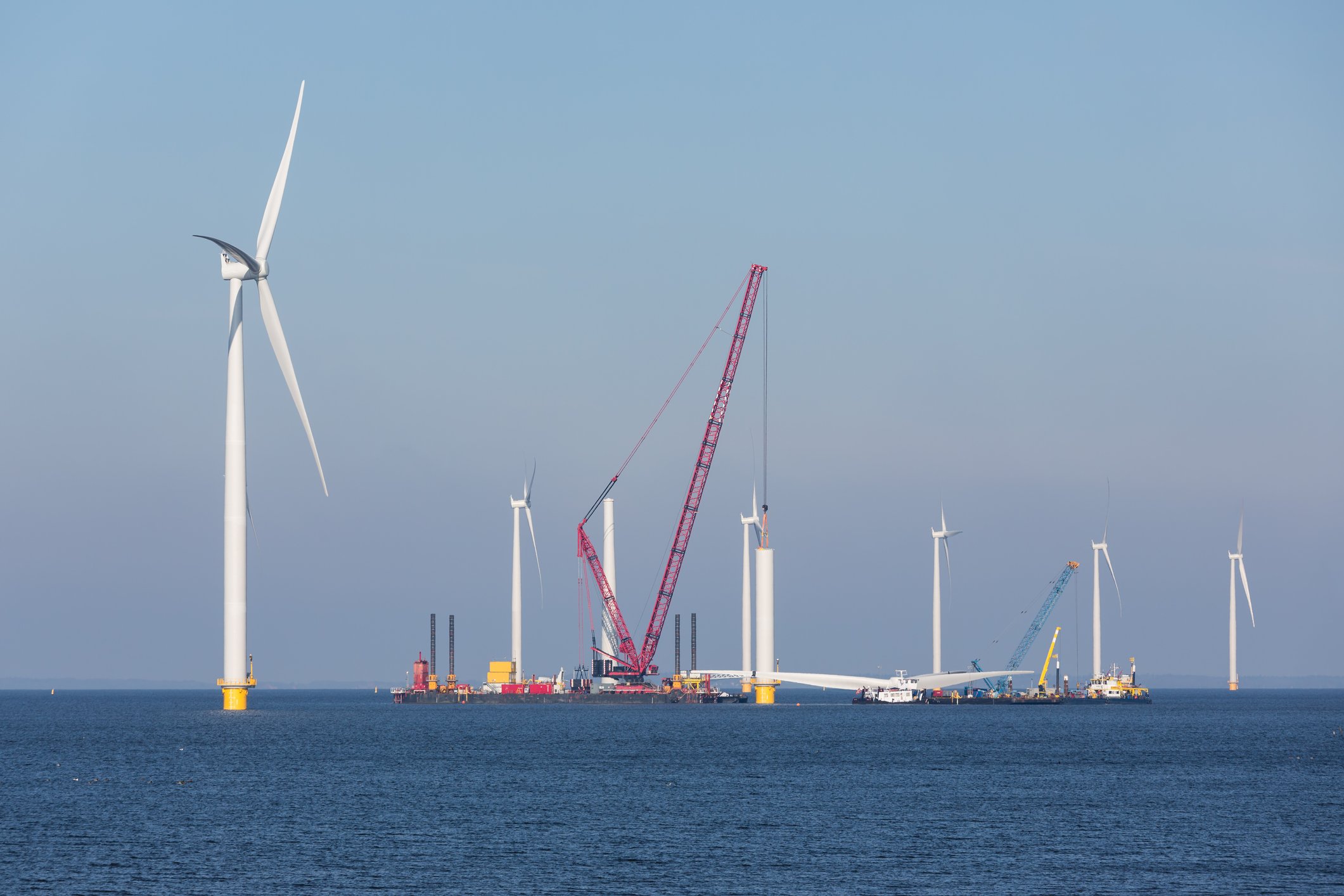This year the offshore wind energy industry will start construction on a further 26 wind farms making a worldwide total of 188. Knowing where to build these often vast areas of wind turbines is a job (in part) for weather forecasters.
If you’re floating barges equipped with cranes to construct the turbines you need to have confidence in the weather forecast. The turbines comprise an 80m tall tower and three 55m long blades – when vertical, the tip of the turbine blade reaches 140m. In order for everything to be built and maintained properly you need to know about the wind, wave heights and the likelihood of sandstorms, tornadoes and hurricanes in the build area.
Forecasts are crucial to both health and safety and business performance strategy – bad weather and getting caught in a bad weather scenario can mean the difference between making a profit or a loss.
It might not come as a surprise that in some countries it’s actually a legal requirement for the offshore wind industry to have two different sources of weather data.
From the above, you might also begin to recognise that there are parallels for those using any type of forecast data, like dividend forecasts. Admittedly, in most cases, a wrongly forecast amount or ex-div date will not be life-threatening, but it might come with unwanted consequences.

Better data makes for a better forecast
In the offshore industry, a single meteorological mast can cost €15 million. The UK Met Office crunches a whopping 27 trillion bits of data – far in excess of what even the largest teams of analysts and forecasters can achieve.
However, more data doesn’t mean a better weather forecast. Better data from different sources makes a better forecast.
The professional weather data providers do the work for the construction and management companies by taking various sources of weather data to make a model and create the most accurate forecasts.
What dividend forecasting can learn from offshore wind farm construction
Options traders and market makers can learn a lot from the offshore wind energy industry.
Today, there are three providers of global dividend forecast data; Bloomberg, IHS Markit and Woodseer Global.
Typically a financial services company might take IHS Markit or Bloomberg for their broad financial needs, sometimes including the dividend forecast products. What increasing numbers of financial institutions, hedge funds and options makers are doing is adding a second (or even third) dividend forecast dataset, collected and modelled in a different way.
IHS Markit and Bloomberg both approach their forecasts based on fundamental analysis of companies; working on a company-by-company basis or across a sector. They look at balance sheets, and earnings announcements and health of a company. They’re doing individual forecasts and then they’re enhancing their approach with technology.
This is the approach you would take if you’ve been doing dividend forecasting for 20 years.
The Woodseer hybrid approach on the other hand was launched just under five years ago. An advantages we have from starting so recently is we’re able to leverage the most recent developments in technology, data storage and processing power, innovative data models and algorithms.
With Woodseer’s data available as a feed via API (or FTP), clients configured it any way they need – integrating with BI at the glass (third-party modelling platforms) or other Alternative Data – or setting alongside Bloomberg or Markit data.
How does Woodseer create an advantage?
Woodseer delivers accuracy at scale. Our underlying data source is every publicly listed company in the world and then, using our specialist dividend forecasting experience, we apply this knowledge and experience via our algorithm to this huge corporate actions data set.
Woodseer only provides dividend forecasting data. We are specialists only in dividend forecast data.
So we survive on the accuracy of the forecast. Nothing else. No other additional services.
Woodseer Director Ed Dean says: “We have converted every direct API triallist into a customer and we have never lost a customer. This is what makes us believe our dividend forecasts are the most accurate available. Our clients and triallists tell us.”
If I was already a Bloomberg or IHS Markit user, how would I go about testing dual data sources?
Bloomberg T’s and C’s might prevent you from doing a direct comparison but whether you’re going to go and do one anyway is a different matter. Ed Dean continues: “We make our data available to potential clients in a number of ways. We can offer a login to spot check securities within a specific universe for a couple of weeks. We regularly provide full forecast history files for backtesting – these contain every forecast we’ve ever made for a particular universe and time period e.g. the Russell 3000 for the last four years. Or there’s a direct API comparison trial where the user will literally have access to our data, bring it into their system, work with it and see the results they get from that over a three month period.”
“With the direct API trial, we have a 100% success rate of converting to clients.”
Read more about the three providers of global dividend forecast data and how learn how they compare – Woodseer Global, Bloomberg and IHS Markit. Click the link or button below:
{{cta(‘e5641fed-b343-45a9-861a-5d6dbf92a040′,’justifycenter’)}}